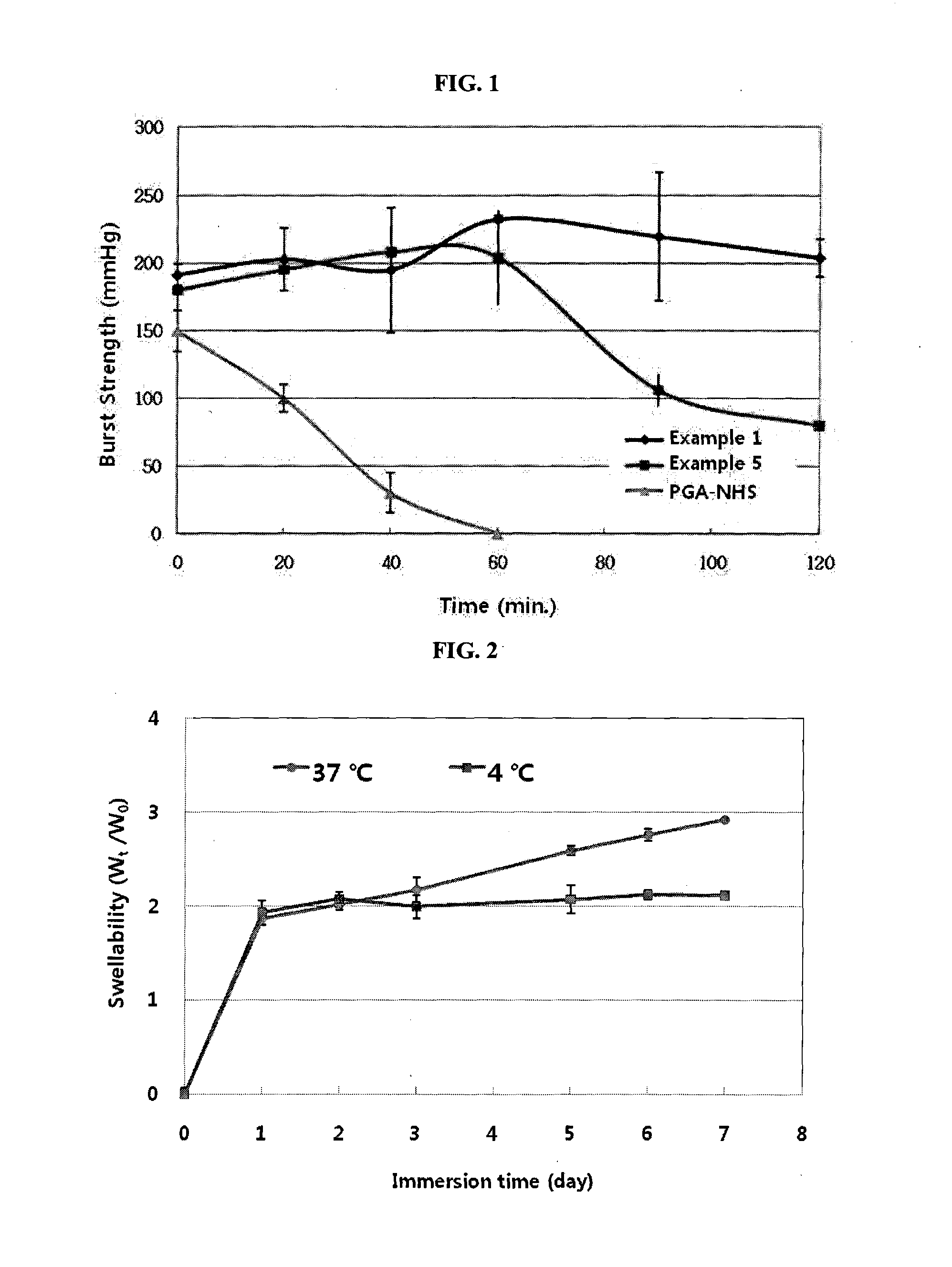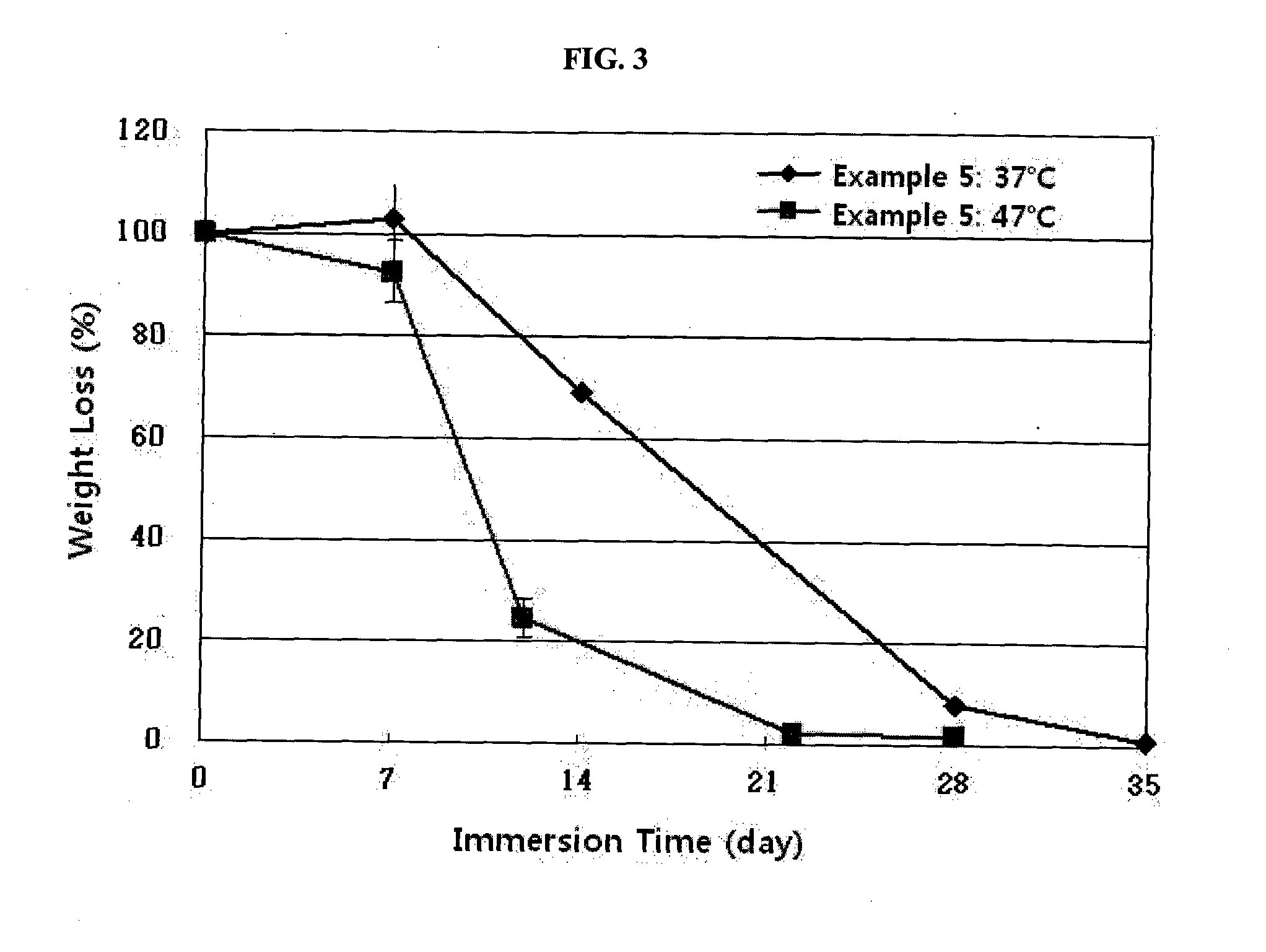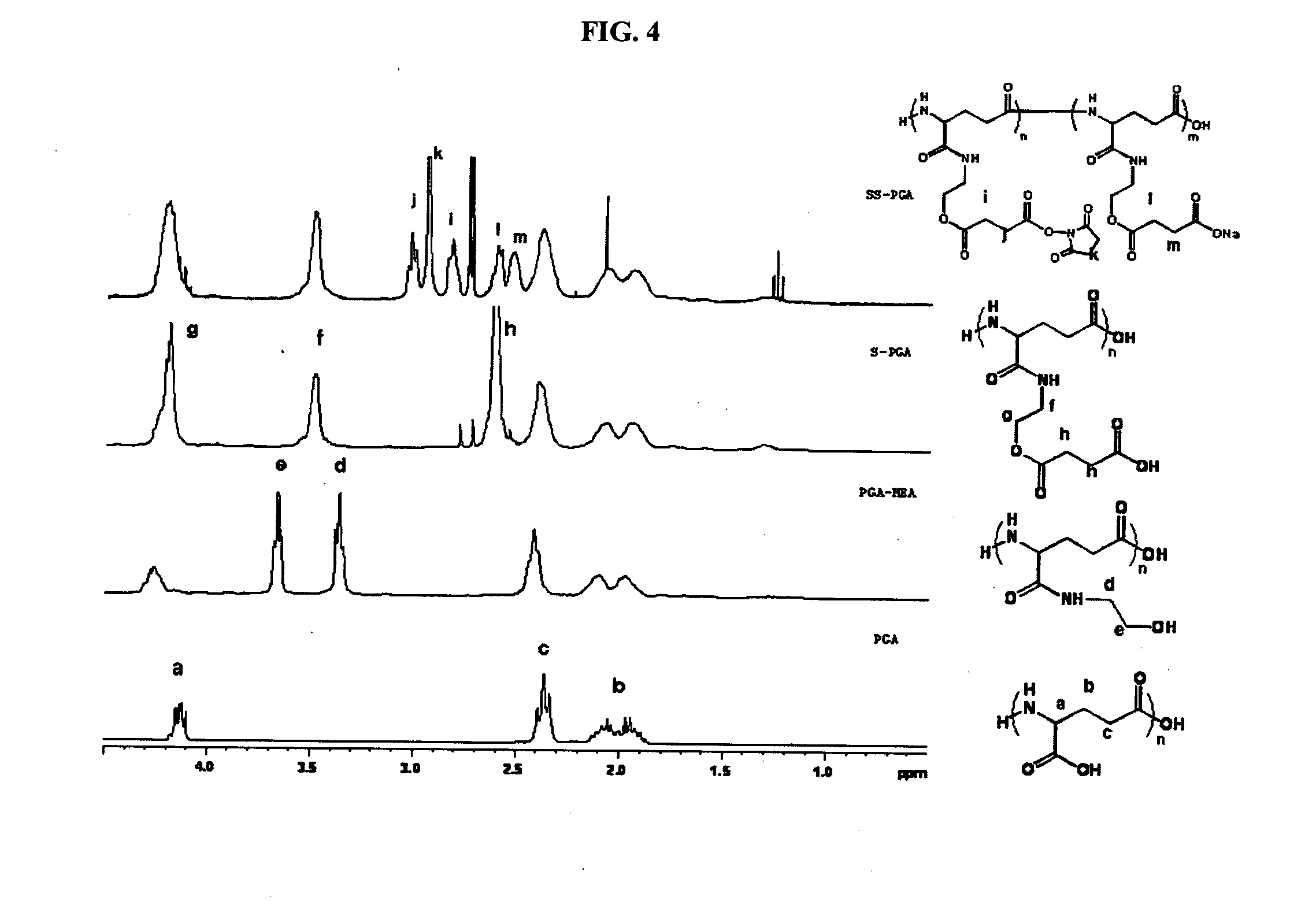IN SITU CROSSLINKING HYDROGEL COMPRISING gamma-POLYGLUTAMIC ACID AND METHOD FOR PRODUCING THE SAME
- Summary
- Abstract
- Description
- Claims
- Application Information
AI Technical Summary
Benefits of technology
Problems solved by technology
Method used
Image
Examples
preparation example 1
Preparation of Activated SS-PGA
preparation example 1.1
Preparation of γ-PGA-MEA by Introduction of Linker to γ-PGA
[0100]To a dried 1000 ml 2-neck round glass flask were added 100 mmol (12.9 g) of γ-polyglutamic acid (PGA, molecular weight 50K, 500K, 1000K, and 2000K Da) on the basis of carboxyl units and 650 ml of dimethylsulfoxide (DMSO), which were then stirred at 60° C. for 16 hours so that they were evenly dissolved and then, the temperature of the reaction solution was lowered to a room temperature (25° C.). N-hydroxysuccinimide (NHS) and dicyclohexylcarbodiimide (DCC) were measured in 2 equivalent overweights, respectively with regard to the carboxyl units of γ-polyglutamic acid, and sodium bicarbonate was measured in the same molar ratio as γ-polyglutamic acid and then, they were added and stirred under a reduced pressure to eliminate moisture. After one hour, they were reacted under nitrogen atmosphere for 3 hours. After the completion of the reaction, monoethanolamine (MEA) measured in 2 equivalent overweights with regard to th...
preparation example 1.2
Preparation of S-PGA (Succinylated PGA) by Introduction of Alkanoic Acid Group at Linker Terminal
[0102]To a dried 1000 ml 2-neck round glass flask were added 100 mmol (18.3 g) of γ-PGA-MEA prepared in Preparation Example 1.1 above on the basis of hydroxyl units and 450 ml of dimethylsulfoxide (DMSO), which were then stirred at a room temperature (25) for 2 hours so that they were evenly dissolved and then, succinic anhydride (SA) was measured in 6 equivalent overweights with regard to the hydroxyl units of γ-PGA-MEA, and sodium bicarbonate was measured in a ½ level with regard to the moles of SA and then, they were added and stirred under a reduced pressure to eliminate moisture. After one hour, they were reacted under nitrogen atmosphere for 24 hours.
[0103]After the completion of the reaction, the reaction solution was filtrated to eliminate sodium bicarbonate and then, precipitated in 2.7 L of ethyl acetate (EA). After the complete elimination of the unreacted SA by washing twice ...
PUM
| Property | Measurement | Unit |
|---|---|---|
| Molar ratio | aaaaa | aaaaa |
| Biodegradability | aaaaa | aaaaa |
Abstract
Description
Claims
Application Information
 Login to View More
Login to View More - R&D
- Intellectual Property
- Life Sciences
- Materials
- Tech Scout
- Unparalleled Data Quality
- Higher Quality Content
- 60% Fewer Hallucinations
Browse by: Latest US Patents, China's latest patents, Technical Efficacy Thesaurus, Application Domain, Technology Topic, Popular Technical Reports.
© 2025 PatSnap. All rights reserved.Legal|Privacy policy|Modern Slavery Act Transparency Statement|Sitemap|About US| Contact US: help@patsnap.com



